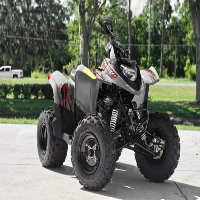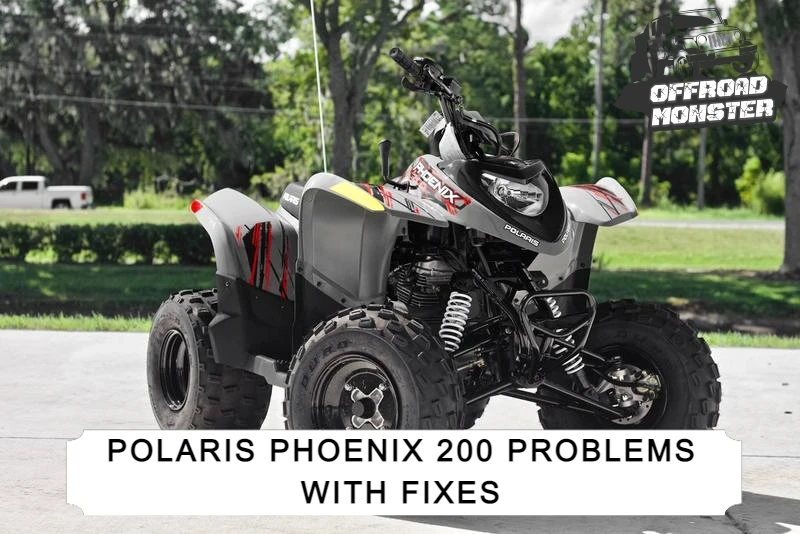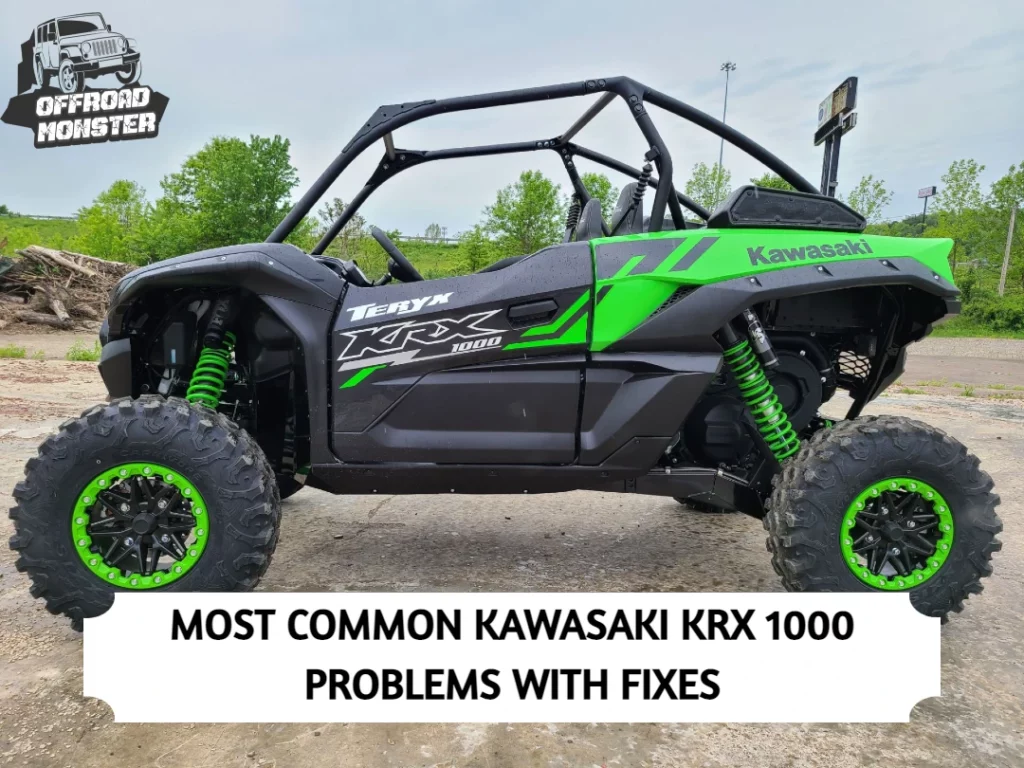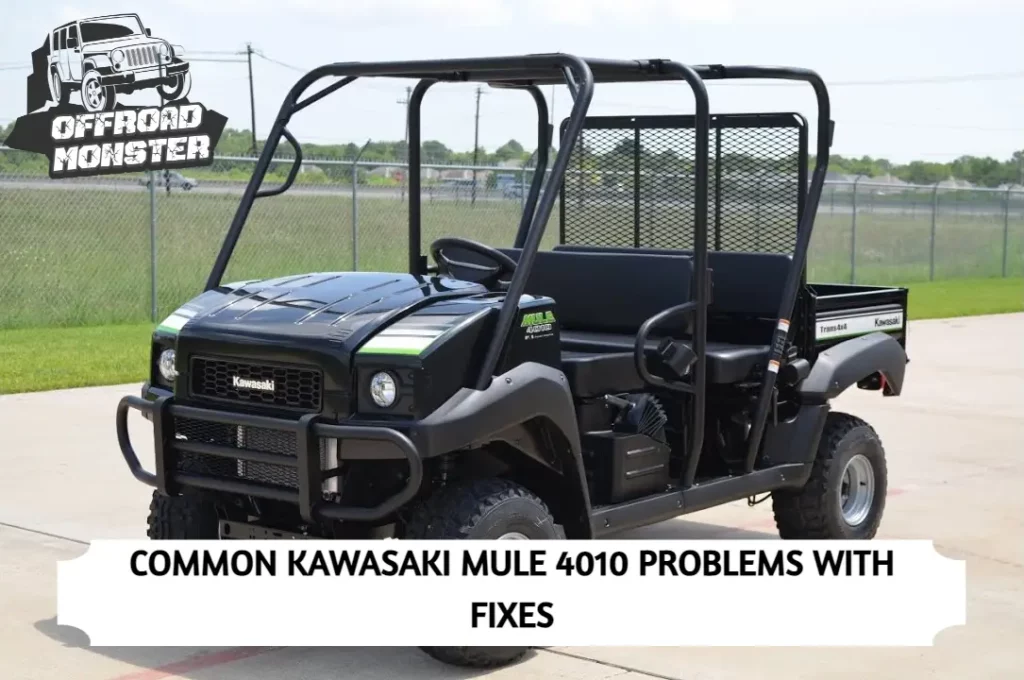Polaris Phoenix 200 is a powerful and versatile all-terrain vehicle that is perfect for off-road enthusiasts. However, like any other vehicle, the Polaris Phoenix 200 is not without its flaws. Many users have reported various issues and problems that can affect its performance and reliability.
In some cases, users report that their engines won’t start, their brakes squeak or their batteries drain too quickly. Whatever it is, you know it’s affecting your performance and enjoyment of your ride.
In this post, we will highlight some of the most common problems that Polaris Phoenix 200 owners face and provide you with some possible solutions to help you fix them. From engine problems to suspension issues, we will cover everything you need to know to keep your ATV running smoothly.
Polaris Phoenix 200 Problems:
Owning a Polaris Phoenix 200 can be an exciting experience, but it’s important to understand that like any other vehicle, it can also encounter some issues.
However, with the right knowledge and tools, you can tackle these problems and keep your ATV running smoothly. In this post, we will provide you with an in-depth look at the most common Polaris Phoenix 200 problems and find out how you can fix your Polaris Phoenix 200 problems.
Here are the list of the most common Phoenix 200 problems:
1. Transmission Problems
2. Throttle Speed Control Problems
3. Not Shifting into Gears
4. Carburetor Problems
5. Starting Problems
6. Engine Stall Problems
7. Losing Power When Accelerating
8. Rear Brake
9. Electrical Problems
1. Transmission Problems:
One of the most common problems with the Polaris Phoenix 200 is transmission. The transmission may slip, jerk, or make noise when shifting gears. This can affect the performance and safety of your ATV.
The Fix:
Here are some possible fixes for this problem:
1. Check the transmission fluid level and condition: Low or dirty fluid can cause friction and wear in the transmission. You may need to add or change the fluid according to the owner’s manual.
2. Adjust the clutch cable and linkage: The clutch cable and linkage control the engagement and disengagement of the clutch. If they are loose or misaligned, they can cause the transmission to slip or not shift properly. You can adjust them by following the instructions in the service manual.
3. Replace the transmission belt: The transmission belt transfers power from the engine to the transmission. If it is worn, stretched, or damaged, it can cause the transmission to slip or not shift smoothly. You can replace it by following the steps in the service manual.
2. Throttle Speed Control Problems:
Another common problem with the Polaris Phoenix 200 is the throttle speed control. The throttle speed control regulates the speed and acceleration of your ATV. If it is not working properly, your ATV may run too fast or too slow, or have poor throttle response. Here are some possible fixes for this problem:
The Fix:
Here are some possible fixes for this problem:
1. Clean and lubricate the throttle cable and lever. The throttle cable and lever connect the throttle pedal to the carburetor. If they are dirty or dry, they can cause friction and resistance in the throttle operation. You can clean and lubricate them with a spray cleaner and a light oil.
2. Adjust the idle speed and mixture screws. The idle speed and mixture screws control the amount of fuel and air that enter the engine at idle. If they are out of adjustment, they can cause your ATV to idle too high or too low, or to stall when you release the throttle. You can adjust them by using a screwdriver and a tachometer.
3. Replace the spark plug. The spark plug ignites the fuel-air mixture in the engine. If it is fouled, worn, or damaged, it can cause your ATV to run poorly or not start at all. You can replace it by following the instructions in the owner’s manual.
3. Not Shifting into Gears:
A third common problem with the Polaris Phoenix 200 is not shifting into gears. This problem can prevent you from changing speeds or directions on your ATV.
The Fix:
1. Check the shift lever and linkage. The shift lever and linkage allow you to select different gears on your ATV. If they are bent, broken, or loose, they can prevent you from shifting into gears. You can check them by inspecting them visually and feeling for any play or resistance.
2. Check the gear selector switch. The gear selector switch tells the transmission which gear you want to use. If it is faulty, corroded, or disconnected, it can prevent you from shifting into gears. You can check it by using a multimeter and a wiring diagram.
3. Check the transmission solenoid. The transmission solenoid controls the flow of fluid to the transmission valves. If it is faulty, clogged, or shorted, it can prevent you from shifting into gears.
4. Carburetor problems:
The carburetor regulates the fuel and air mixture for the engine. If it is dirty, clogged, or out of adjustment, it can cause your ATV to run poorly, backfire, or not start at all.
The Fix:
You can fix this problem by cleaning the carburetor with a spray cleaner, adjusting the screws and jets, or replacing the carburetor if it is damaged.
5. Starting problems:
The Polaris Phoenix 200 is a youth ATV that offers a fun and safe riding experience for young riders. One of the most common problems that Polaris Phoenix 200 owners face is the starting problem.
This problem occurs when the ATV fails to start or has difficulty starting in certain conditions, such as cold weather or after sitting for a long time. This problem can be frustrating and inconvenient, especially when you are eager to ride your ATV.
There are several possible causes for the starting problem of the Polaris Phoenix 200. Some of them are:
1. Weak battery.
2. Faulty starter solenoid.
3. Bad spark plug.
4. Low fuel level.
The Fix:
Fortunately, there are some possible solutions for the starting problem of the Polaris Phoenix 200. Some of them are:
1. Charging or replacing the battery: The battery should be charged regularly and maintained properly to ensure its optimal performance and lifespan. You can use a battery charger or a multimeter to check the battery voltage and charge level.
If the battery is old, damaged, or cannot hold a charge, you should replace it with a new one that meets the specifications of your ATV.
2. Testing and replacing the starter solenoid: The starter solenoid can be tested by using a jumper wire or a screwdriver to bypass it and connect the battery directly to the starter motor.
If the starter motor spins when you do this, it means that the starter solenoid is faulty and needs to be replaced. If not, it means that there is another problem with the starter motor or wiring.
3. Checking and replacing the spark plug: The spark plug can be checked by removing it from the engine and inspecting its condition and gap. If the spark plug is dirty, oily, or wet, you should clean it with a wire brush or a spray cleaner.
If it is worn, cracked, or broken, you should replace it with a new one that matches your ATV model. You should also check and adjust the spark plug gap according to your owner’s manual.
4. Adding fresh fuel to the tank: The fuel level in the tank should be checked regularly and kept above a minimum level to prevent air bubbles and fuel starvation.
You should also use fresh and clean fuel that meets your ATV specifications and avoid using old or contaminated fuel that can cause clogging and corrosion in your fuel system.
6. Engine stalling problems:
The Polaris Phoenix 200 may have problems with the engine stalling or dying while riding, especially when it is warm. This can be due to a faulty fuel pump, a dirty fuel filter, a loose fuel line, a bad CDI box, or a faulty stator.
The Fix:
You can fix this problem by testing and replacing the fuel pump, replacing the fuel filter, tightening or replacing the fuel line, testing and replacing the CDI box, or testing and replacing the stator. You can also check the air filter and make sure it is not clogged or dirty.
7. Losing power when accelerating:
The Polaris Phoenix 200 may lose power or bog down when you try to accelerate or go uphill. This can be due to a dirty air filter, a clogged fuel filter, a faulty fuel pump, or a lean fuel mixture.
The Fix:
You can fix this problem by cleaning or replacing the air filter, replacing the fuel filter, testing and replacing the fuel pump, or adjusting the carburetor.
8. Rear brake problems:
The Polaris Phoenix 200 may have problems with the rear brake, such as squeaking, grinding, or not working at all. This can be due to worn brake pads, a damaged brake disc, a loose brake caliper, or a low brake fluid level.
The Fix:
You can fix this problem by replacing the brake pads, resurfacing or replacing the brake disc, tightening the brake caliper bolts, or adding brake fluid to the reservoir.
9. Electrical problems:
The Polaris Phoenix 200 may experience electrical issues such as dim lights, flickering gauges, or no power at all. This can be due to a loose or corroded battery terminal, a blown fuse, a shorted wire, or a bad voltage regulator.
The Fix:
You can fix this problem by cleaning and tightening the battery terminal, replacing the fuse, tracing and repairing the wire, or testing and replacing the voltage regulator.
Conclusion for Polaris Phoenix 200 Problems:

As a Polaris Phoenix 200 owner, it is essential to be aware of the common problems that your ATV may encounter. By following the above steps, you can fix the problem of your Polaris Phoenix 200 ATV and enjoy your riding experience without any hassle. However, if you are not confident or experienced in doing these repairs yourself, you should always consult a professional mechanic or a Polaris dealer for assistance.
Read Also:
4. Evolution Golf Cart Problems



